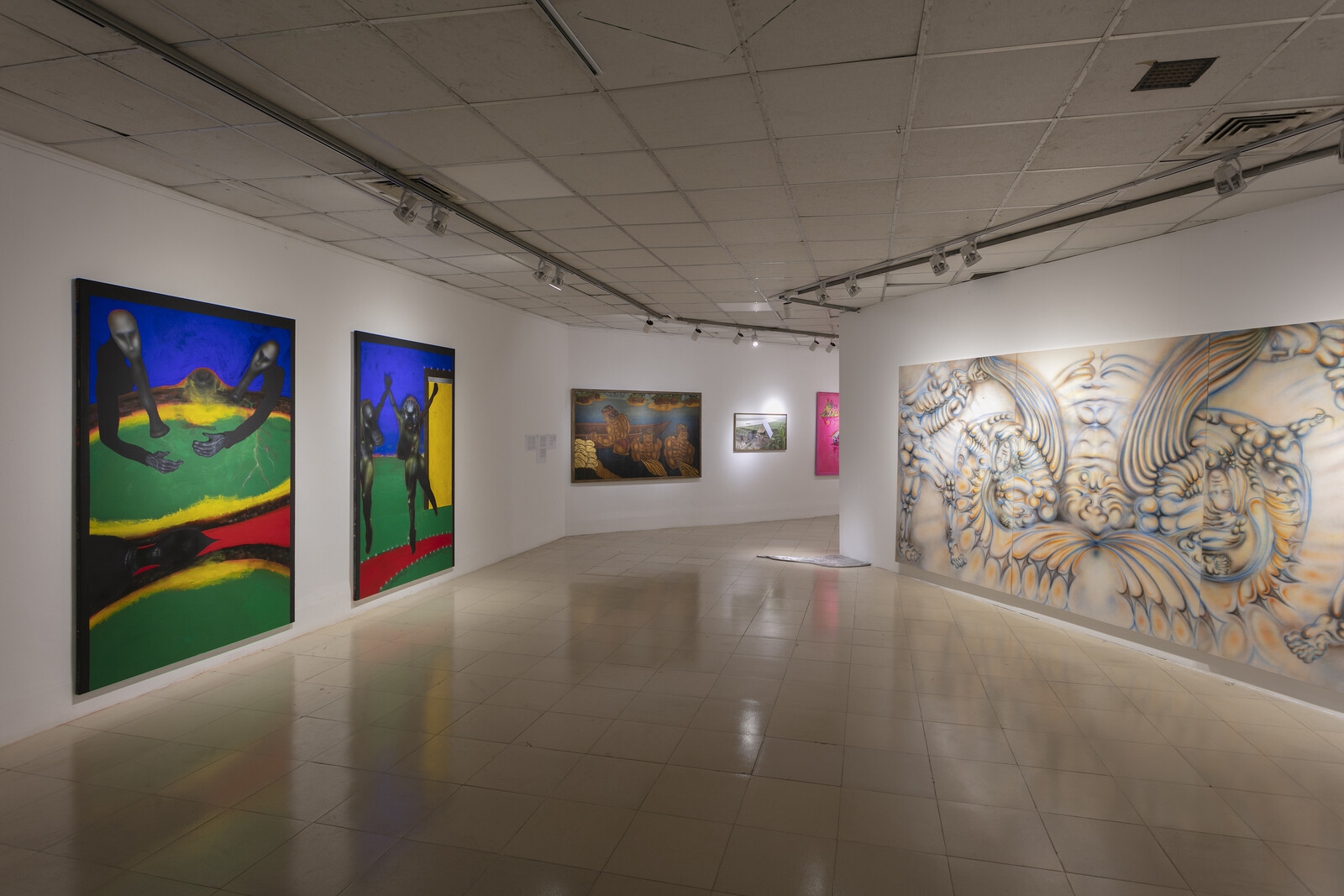Drawing inspiration from a literal translation of Bonna—the Bangla word for flood and a common girls’ name—this sixth edition of the Dhaka Art Summit looked at the social and ecological impact of climate change in Bangladesh. Under the direction of Diana Campbell (the curator’s fifth edition), this theme is channeled through the imagination and playfulness of the eponymous fictional child as she grows up in an environment under threat.
Of the many dichotomies that this edition sought to challenge across its nine days—disaster and regeneration, natural and built environments, binary gender norms—the most noticeable friction was between criticality and approachability. Campbell has insisted that she sees this research and exhibition platform as closer to a music festival than a biennale, noting that the previous iteration attracted half a million visitors. This attempt to navigate between the expectations of a visiting international audience professionally engaged in the art world and the desire to appeal to a large local audience resulted—across more than 120 artists, over half of them showing new commissions—in a curatorial impulse to foreground work deemed approachable and entertaining.
Scattered through the main venue of the Shilpakala Academy were large-scale, colorful, eye-catching works. Bhasha Chakrabarti’s Tender Transgressions (2022–23) was a lively intervention on the balcony floor, in which the artist converted nine columns of the mezzanine into anthropomorphic forms wrapped in cloth and jute, a seasonal crop essential to Bangladesh’s economy. The sprawling installation also included the display of over a thousand saris, braided and draped around the pillars and meandering across the floor. Playing with the idea of excess as connoted by Bonno—a Bangla word for wildness historically co-opted to denigrate women’s sexuality—this extravagant display played on the tension between “too much” and “not enough.” Elsewhere, in the “too much” category, “দ্বৈধ (a duality),” one of the three curated components of the exhibition, addressed critical environmental issues. The majority of this display was by Bangladeshi artists, and was least convincing where its gallery floors were filled with hay, the barn-like environment and “dry primitive aroma”—as the exhibition text put it—distracting from the work, rather than providing generative new contexts for its reception.
The summit was most successful where it made use of storytelling to navigate between criticality and accessibility. In “Very Small Feelings,” another of the sub-exhibitions co-curated by Akansha Rastogi, Afrah Shafiq’s interactive game Nobody Knows For Certain (2021–22) submerged viewers in a “sea of stories” based on her interpretations of the Soviet fairytales that came to India during the Cold War. Through her work, the artist adds her own updated political and philosophical interpretations to the stories, giving agency to audiences by inviting them to play, make choices, and explore. Similarly, Thảo Nguyên Phan’s captivating two-channel video Tropical Siesta (2017) invited viewers into Vietnamese history through a combination of intimate images of children at rest and a soundtrack that reminded viewers of the damage wrought by Communist-era agrarian policies.
Historic or threatened forms of knowledge were brought to the fore throughout the exhibition. Rizvi Hassan’s project in “To Enter The Sky,” the third sub-exhibition, curated by Sean Anderson, focused on his architectural work at the Rohingya refugee camps in Cox’s Bazar (which recently won him the Aga Khan Award). Hassan’s tactile display allows visitors to engage in the thinking behind his largely collaborative approach to architecture, which in this case involved collecting knowledge and techniques of production from community members. Their needs were met through materials such as palm leaves and bamboo, widely used by the Rohingya in a climate known for its frequent cyclones.
While the summit draws on modalities from the past and looks to the future, it shies away from a number of issues that plague the present. Given the democratic backsliding prevalent in South Asian countries and apparent in increasingly frequent crackdowns on freedom of speech, there was a sense that exhibition’s emphasis on playfulness had come at a cost. And in light of the exhibition’s ecological focus, it was surprising to see no work directly address the intimidation of environmental activists in the country.
Tucked away in a distant corner of the exhibition, Faysal Zaman’s (un)filled (2021–23) was one of the few works to be vocal in its criticism of the repression and human rights violations that mark Bangladesh’s current political climate. Zaman’s long-term project puts on view photographs of the victims of “enforced disappearances” in Bangladesh through an archive of found images from the internet. Projecting them in front of an unplugged mic, the artist signals the victims’ voicelessness. Impactful works such as this—relegated to the quietest corners of this exhibition—serve to highlight a broader hesitancy to center overtly polemical work.
The Dhaka Art Summit has significant spending power from the Samdani Art Foundation and a robust infrastructural network, yet errs towards playing it safe. Works such as Zaman’s show its potential to be an important discursive platform for voices from South Asia. Given that the summit continues to grow and change with each edition, there’s reason to hope it will continue to evolve in this direction, and become a space in which artists and thinkers can freely address the fraught realities of the region.





